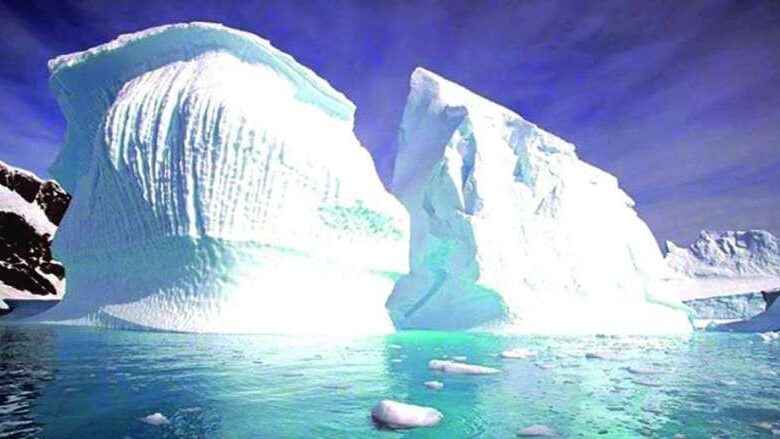
The green spaces under the ice of Antarctica are threatened by climate warming. Scientists have discovered vast areas of green hills and valleys hidden for millions of years under the ice of Antarctica, according to a study whose results were recently published.
While the British and American researchers who made this discovery suggested that this natural painting remained unchanged for 34 million years, they warned that the melting of ice due to climate warming may strip it of its white cover.
The lead author of the study published in the journal Nature Communications, Stuart Jamieson from Britain’s Durham University, told AFP that it is “a natural landscape that has never been discovered and that no one has seen before.”
The researchers did not need new data to discover this scene, but they simply adopted a new approach to monitoring this unknown land located under the ice sheet in East Antarctica, for which much less research and information is available than that available on the surface of Mars.
Seeing what lies beneath the ice sheet required radio waves being pumped into the ice sheet while an aircraft flew above it, allowing the echoes to be analyzed, a technique called radio ultrasound scanning.
It was found that this area, extending over an area of 32 thousand square kilometers, previously included forests and was most likely home to animals, before ice covered it and “froze it in time.”
Although it is difficult to precisely determine when the region was last exposed to the sun, estimates indicate that this happened at least 14 million years ago. But Professor Jamieson’s “hunch” is that it goes back more than 34 million years, when Antarctica began to freeze.
Researchers have previously discovered a city-sized lake under the ice of Antarctica, and the authors of this study hope to discover more natural landscapes. However, climate warming could threaten their latest discovery.
The only good thing about the discovered landscape is that it is located miles from the edge of the ice sheet, which would protect it from exposure to light in the future.
The other reassuring factor is that this hidden world was not affected by the retreat of ice during ancient periods of warming, such as the Pliocene period, 3 to 4.5 million years ago.
But it is not yet known, according to Professor Jamieson, what is the climate “tipping point” that leads to uncontrolled ice melting?













